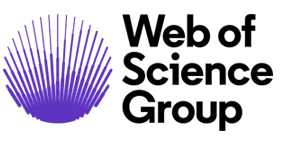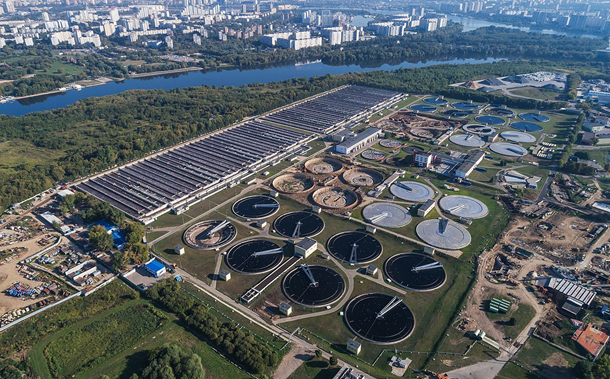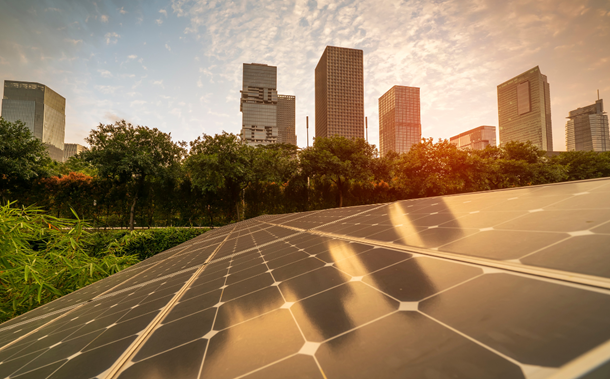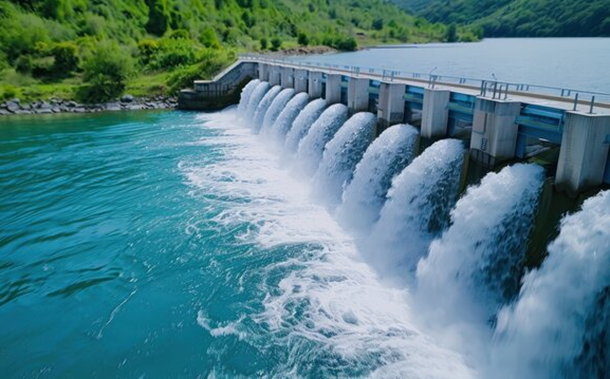Carbon Sequestration Dynamics in Urban-Adjacent Forests: A 50-Year Analysis
Downloads
Doi:10.28991/CEJ-2023-09-09-08
Full Text:PDF
Downloads
[2] Bukharina, I. L., Zhuravleva, A. N., & Bolyshova, O. G. (2012). Urban plantations: environmental aspect: monograph. Udmurtia University, Izhevsk, Russia.
[3] Koroleva, T. S., & Shunkina, E. A. (2014). The review of world experience preservation of carbon in the existing forest tanks. Proceedings of the Saint Petersburg Research Institute of Forestry, Saint-Petersburg, Russia. (In Russian).
[4] Zamolodchikov, D. G., Grabovskii, V. I., Korovin, G. N., Gitarskii, M. L., Blinov, V. G., Dmitriev, V. V., & Kurz, W. A. (2013). Carbon budget of managed forests in the Russian Federation in 1990-2050: Post-evaluation and forecasting. Russian Meteorology and Hydrology, 38(10), 701–714. doi:10.3103/S1068373913100087.
[5] Zamolodchikov, D. G., Grabowsky, V. I., & Chestnykh, O. V. (2018). Dynamics of the carbon budget of forests of federal districts of Russian Federation. Forest Science Issues, 1(1), 1-24. doi:10.31509/2658-607x-2018-1-1-1-24.
[6] Zamolodchikov D.G., Korovin G.N. and Guitar M.L. (2007). The Carbon Budget of Managed Forests in the Russian Federation, Lesovedenie 6, 23-34.
[7] Zamolodchikov, D. G., Grabowsky, V. I., & Shulyak, P. P. (2013). Inventory of carbon budget of forestry sector of Russia. Proceedings of the St. Petersburg Research Institute of Forestry, Saint-Petersburg, Russia. (In Russian).
[8] Dolman, A. J., Shvidenko, A., Schepaschenko, D., Ciais, P., Tchebakova, N., Chen, T., Van Der Molen, M. K., Belelli Marchesini, L., Maximov, T. C., Maksyutov, S., & Schulze, E. D. (2012). An estimate of the terrestrial carbon budget of Russia using inventory-based, eddy covariance and inversion methods. Biogeosciences, 9(12), 5323–5340. doi:10.5194/bg-9-5323-2012.
[9] Kurganova, I. N., Kudeyarov, V. N., & Lopes de Gerenyu, V. O. (2010). Updated estimate of carbon balance on Russian territory. Tellus B: Chemical and Physical Meteorology, 62(5), 497. doi:10.1111/j.1600-0889.2010.00467.x.
[10] Quegan, S., Beer, C., Shvidenko, A., Mccallum, I., Handoh, I. C., Peylin, P., Rödenbeck, C., Lucht, W., Nilsson, S., & Schmullius, C. (2011). Estimating the carbon balance of central Siberia using a landscape-ecosystem approach, atmospheric inversion and Dynamic Global Vegetation Models. Global Change Biology, 17(1), 351–365. doi:10.1111/j.1365-2486.2010.02275.x.
[11] Utkin A. I., Zamolodchikov D. G. & Chestnikh O.V. (2004). Phytomass and soil carbon pools of Russian pine forests. Theoretical and Applied Research Journal, XXII(1), 13-21.
[12] Utkin A. I., Zamolodchikov D. G. & Chestnikh O. V. (2004). Phytomass and soils carbon pools and carbon sequestration in Russian spruce forests. Theoretical and Applied Research Journal, XXII(1), 21-30.
[13] Osipov, A. F., & Bobkova, K. S. (2020). Net Primary Production of Carbon in Pine Forests on European North-East of Russia (Republic of Komi). Contemporary Problems of Ecology, 13(7), 803–812. doi:10.1134/S1995425520070082.
[14] Kutyavin, I. N., & Bobkova, K. S. (2017). Bioproductivity of pine phytocoenoses in the Northern Cisurals Region (the Republic of Komi). Lesovedenie, 1, 3-16.
[15] Osipov, A. F., & Bobkova, K. S. (2016). Biological productivity and carbon sequestration of pine forests at transition from middle aged to mature in middle taiga. Lesovedenie, 5, 346-354. (In Russian).
[16] Zamolodchikov, D. G., Kaganov, V. V., & Lipka, O. N. (2020). Potential Carbon Absorption by Tree-Stand Phytomass in the Course of Tugai Forest Restoration. Contemporary Problems of Ecology, 13(7), 720–729. doi:10.1134/S1995425520070148.
[17] Mazurkin P.M. (2009). Phytomass distribution in research plots placed in pine forest. Forests of Russia and Economy in Them, 3(33), 22–31.
[18] Bobkova, K. S., Tuzhilkina, V. V., & Kuzin, S. N. (2006). Carbon cycle in spruce ecosystems of the northern taiga subzone. Russian Journal of Ecology, 37(1), 19–27. doi:10.1134/S1067413606010048.
[19] Efremov S.P. & Efremova T.T. (2007). Typological spectra and carbon pool of forest swamp ecosystems in Western Siberia. Lesovedenie, 6, 80-92.
[20] Borren, W. (2007). Carbon exchange in Western Siberian watershed mires and implication for the greenhouse effect: A spatial temporal modeling approach. Utrecht University, Utrecht, Netherlands.
[21] Sheng, Y., Smith, L. C., MacDonald, G. M., Kremenetski, K. V., Frey, K. E., Velichko, A. A., Lee, M., Beilman, D. W., & Dubinin, P. (2004). A high-resolution GIS-based inventory of the west Siberian peat carbon pool. Global Biogeochemical Cycles, 18(3), 1–14. doi:10.1029/2003GB002190.
[22] Vaganov, E., Efremov, S., & Onuchin, A. (2006). Carbon Balance and the Emission of Greenhouse Gases in Boreal Forests and Bogs of Siberia. Advances in the Geological Storage of Carbon Dioxide. Nato Science Series: IV: Earth and Environmental Sciences, 65. Springer, Dordrecht, Netherlands. doi:10.1007/1-4020-4471-2_03.
[23] Maslov, M. N., Kopeina, E. I., Zudkin, A. G., Koroleva, N. E., Shulakov, A. A., Onipchenko, V. G., & Makarov, M. I. (2016). Stocks of phytomass and organic carbon in tundra ecosystems of northern Fennoscandia. Moscow University Soil Science Bulletin, 71(3), 113–119. doi:10.3103/s0147687416030042.
[24] Nagimov V. Z., Artemyeva I. N., Lugansky N. A. & Nagimov Z. Ya. (2009). Features of the formation of aboveground phytomass in lichen pine forests. Forests of Russia and Economy in Them, 2(32), 3–9.
[25] Varaksin, G. S., Polyakov, V. I., & Luminarskaya, M. A. (2008). Biological productivity of Scots pine in Central Siberia. Forest science, (3), 14-19.
[26] Klevtsov, D. N., & Tyukavina, O. N. (2018). Carbon depleting ability of Scotch Pine cultures overland phytomass (Pinus sylvestris L.) of medium-taiga forest areas. Bulletin of KrasGAU, 6(141), 221-224.
[27] Usoltsev V. A., Terekhov G. G., Biryukova A. M., Barakovskikh E. V., Nakai N. V. & Kanunnikova O. V. (2008). Biomass of 35-year-old spruce plantations in relation to their establishment and forming on the Ural Region. Forests of Russia and Economy in Them, 27–44.
[28] Navarro-Cerrillo, R. M., Ruiz-Gómez, F. J., Camarero, J. J., Castillo, V., Barberá, G. G., Palacios-Rodríguez, G., Navarro, F. B., Blanco, J. A., Imbert, J. B., Cachinero-Vivar, A. M., Molina, A. J., & Del Campo, A. D. (2022). Long-Term Carbon Sequestration in Pine Forests under Different Silvicultural and Climatic Regimes in Spain. Forests, 13(3), 450. doi:10.3390/f13030450.
[29] Li, Y., Luo, T., Li, S., & Liu, B. (2022). Modeling Optimal Forest Rotation Age for Carbon Sequestration in the Great Khingan Mountains of Northeast China. Forests, 13(6), 838. doi:10.3390/f13060838.
[30] Zhang, C., Ju, W., Chen, J., Fang, M., Wu, M., Chang, X., Wang, T., & Wang, X. (2018). Sustained biomass carbon sequestration by China's forests from 2010 to 2050. Forests, 9(11), 689. doi:10.3390/f9110689.
[31] Tumenbayeva, A. R., Sarsekova, D. N., & Malek, S. (2018). Carbon sequestration of above-ground biomass of Pinus sylvestris L. in the green belt of the city of Astana. Folia Forestalia Polonica, Series A, 60(3), 137–142. doi:10.2478/ffp-2018-0013.
[32] Svalov, N. N. (1979). Modelling of Productivity of Stands and Theory of Forest Use. Forest Industry, Moscow, Russia. (In Russian).
[33] Liepa I. Y. (1980). Dynamics of wood stock: Forecasting and ecology. Zinatne Publisher, Riga, Latvia.
[34] Sheingauz, A. S. (1996). The role of fire in forest cover, structure, and dynamics in the Russian Far East. In Fire in ecosystems of Boreal Eurasia, 186-190, Springer Netherlands. doi:10.1007/978-94-015-8737-2_13.
[35] Ministry of Ecology and Rational Nature Management of the Krasnoyarsk Krai. (2021). On the state and protection of the environment in the Krasnoyarsk Krai in 2021. Krasnoyarsk, Russia. Available online: http://www.mpr.krskstate.ru/envir/ page5849/0/id/57481 (accessed on May 2023).
[36] Anuchin, N. P. (2004). Forest inventory: Textbook for Universities. VNIILM, Moscow, Russia.
[37] Zamolodchikov, D. G., Utkin, A. I., & Korovin, G. N. (2005). Conversion factors phytomass/reserve in connection with dendrometric indicators and composition of stands. Forest Science, 6, 73-81.
[38] Filipchuk, A., Moiseev, B., Malysheva, N., & Strakhov, V. (2018). Russian forests: A new approach to the assessment of carbon stocks and sequestration capacity. Environmental Development, 26, 68–75. doi:10.1016/j.envdev.2018.03.002.
[39] Ministry of Natural Resources and Environment (2023). Methodological Guidance for quantifying greenhouse gas emissions by organizations engaged in economic and other activities in the Russian Federation approved by Order of the Russian. Ministry of Natural Resources and Environment, Moscow, Russia.
[40] Xiao, J., Chen, L., Zhang, T., Li, L., Yu, Z., Wu, R., Bai, L., Xiao, J., & Chen, L. (2022). Identification of Urban Green Space Types and Estimation of Above-Ground Biomass Using Sentinel-1 and Sentinel-2 Data. Forests, 13(7), 77. doi:10.3390/f13071077.
[41] Zhu, C., Wang, Z., Ji, B., Wang, J., Xu, C., & Xie, B. (2022). Measurement and Spatial Econometric Analysis of Forest Carbon Sequestration Efficiency in Zhejiang Province, China. Forests, 13(10). doi:10.3390/f13101583.
[42] Cheng, S., Huang, X., Chen, Y., Dong, H., & Li, J. (2022). Carbon Sink Performance Evaluation and Socioeconomic Effect of Urban Aggregated Green Infrastructure Based on Sentinel-2A Satellite. Forests, 13(10), 1661. doi:10.3390/f13101661.
[43] Vais, A. A., Popova, V. V., Andronova, A. A., Nemich, V. N., Nepovinnykh, A. G., & Mikhaylov, P. V. (2023). Assessment of Carbon Productivity Dynamics in Aspen Stands under Climate Change Based on Forest Inventories in Central Siberia. Forests, 14(1), 109. doi:10.3390/f14010109.
[44] Zhao, J., Lange, H., & Meissner, H. (2022). Estimating Carbon Sink Strength of Norway Spruce Forests Using Machine Learning. Forests, 13(10), 1721. doi:10.3390/f13101721.
[45] Popova V. V., & Andronova A. A. (2022). Climatic trends in temperature dynamics for Krasnoyarsk. Proceedings of the All-Russian scientific conference with international participation, dedicated to the 30th anniversary of the Center for Problems of Ecology and Productivity of Forests of the RAS, 25-29 April, 2022, Moscow, Russia.
- Authors retain all copyrights. It is noticeable that authors will not be forced to sign any copyright transfer agreements.
- This work (including HTML and PDF Files) is licensed under a Creative Commons Attribution 4.0 International License.![]()














